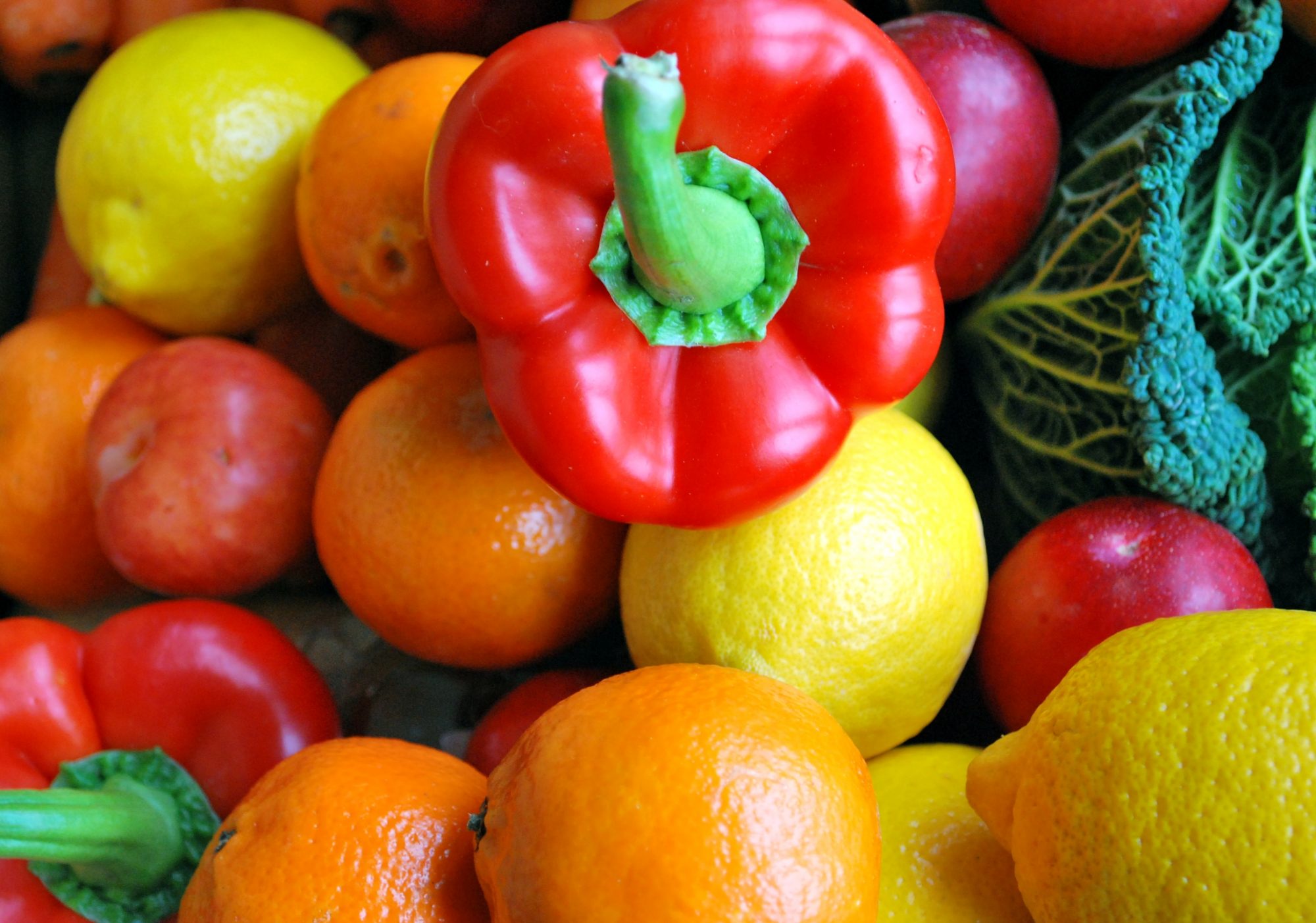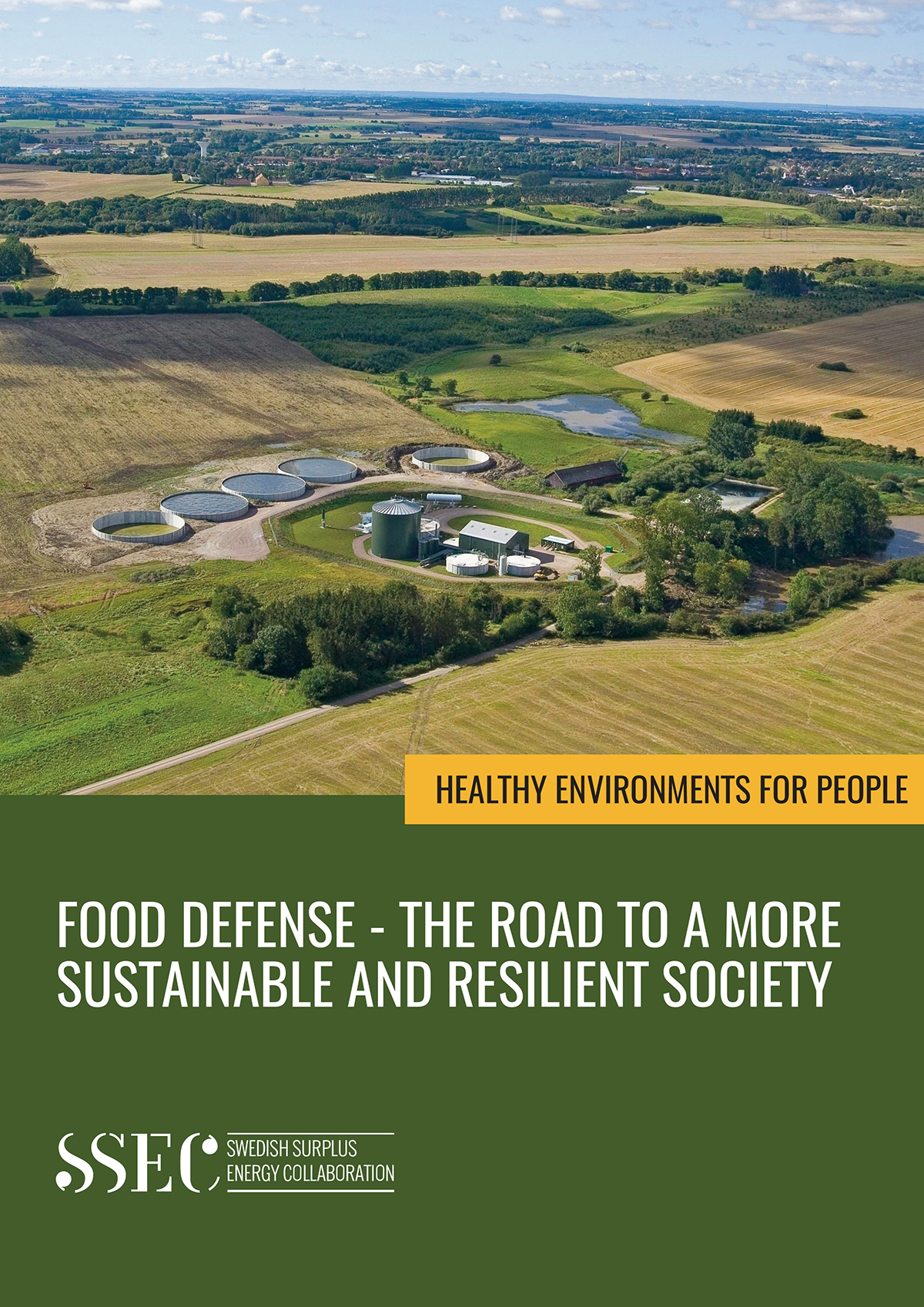The Swedish Surplus Energy Collaboration (SSEC) at the SLU-Swedish University of Agricultural Sciences discusses how a multi-level Food Defense could protect food security across the globe
A local, regional, and national Food Defense is not just an insurance in troubled times and situations of worldwide challenges such as the recent pandemic. It is sustainable-climate-smart and drives technology development.
As early as 2018, SSEC, through Håkan Sandin, addressed this challenge, which is also a realistic possibility. It is basically a matter of abandoning a linear production model in primary cultivation and the food industry. To be resource efficient and thus achieve sustainable and climate-smart production, collaboration between several industries needs to take place – Industrial symbiosis or as it is also called a circular production model. This is done via production taking place in closed systems where nothing is described and treated as waste but is a resource, an asset.
For several reasons, it is important that a country’s or region’s degree of self-sufficiency is at a level that can withstand unrest and challenges without the system collapsing with gigantic price increases or food shortages. At the same time, it will lead to the production model itself being sustainable and climate smart. I want to highlight factors for a circular production model.
Energy, power supply and logistics
To produce food, we must use large amounts of energy, in addition to an ever-increasing scale. The reason the need for energy is increasing is that more and more people are moving to the city and that the population is growing. Today, more than 50% of the world’s population lives in cities. The world’s production system is changing at a furious pace and increasingly energy-intensive means of production such as fertilizers and pesticides are being used. Because we still use the same areas to produce our food, as when we ourselves lived in the countryside, it requires many, long and expensive modes of transport to the city. The conclusion of this is that transports on our roads and in our cities is increasing more and more. It is by no means sustainable.
The question we must ask ourselves then is:
Can we save energy and reduce logistics when we produce food?
Intensive and circular food production
- We need to close the systems and make them circular and symbiotic. By using modern technology and circular cultivation systems, we can dramatically reduce the need for arable land to produce food.
- We can reduce transports by starting to produce food locally and in urban locations. We thus also become less dependent on imports.
- We can develop and embrace intensive, symbiotic, completely closed production systems that are more environmentally friendly than large-scale production on arable land.
- We can produce renewable fuels and lubricants with ecologically sustainable renewable materials.
- We can develop ecologically sustainable fertilizers and sustainable systems for nutrient supply of food crops.
We can develop ecologically sustainable plant protection products and systems for the protection of food crops against diseases and pests.
“Place them in urban areas where people live today, we reduce the need for transport and can also benefit from surplus heat, electricity, organic material, and other unused resources.”
Food production in houses where people live
Producing our food locally, where people live, is undoubtedly part of the solution.
To produce fish and vegetables locally, so that we provide humanity with the food that is useful to us and best for nature. By producing food indoors, we can place them exactly where we want, without being limited by climate, and where we have full control over all flows, which gives us opportunities to develop circular and symbiotic production systems. Place them in urban areas where people live today, we reduce the need for transport and can also benefit from surplus heat, electricity, organic material, and other unused resources. Then we can also more easily hire people who have no job. By producing indoors, we are open to endless innovation opportunities by using high tech and supporting future ingenious solutions.
We are well on our way and there are already several good examples In Sweden, the Swedish University of Agricultural Sciences runs several research projects that revolve around land-based aquaculture, aquaponics, and circular vertical cultivation. Several research projects are also involved in the so important transition from animal protein to vegetable – the protein shift.
Agtira is a world-leading system supplier of aquaponic systems for an urban environment. In Härnösand municipality they have established one of the world’s largest aquaponic facilities for commercial use and has begun construction of cultivation facilities that are co-located with large grocery stores in several locations in Sweden.
Pond Fish and Greens is another company in land-based aquaculture that, with its own developed technology, runs land-based fish farming at Garveriet in Floda in Lerum Municipality, and is a system supplier for small-scale farming in both urban and rural environments.
Eon provides energy-sharing systems, which are a key factor in a circular production model and industrial symbiosis.
Solserv with its composting technology plays an important role in a circular system to take care of residual flows in a resource-efficient way and transform them into valuable inputs in the food chain and in primary cultivation.
Sanso Mixing System plays an important role in the production process when it comes to developing and producing both feed and food from new input products. It places high demands on innovative technology for it to work.

Vrams Gunnarstorps Gods-Söderåsen’s bioenergy, a biogas plant in Bjuv municipality, uses residual products that are converted into environmentally friendly energy while supplying agriculture with biofertilizer. Constant development work is underway here to show the way for a modern and sustainable agriculture. The opportunity to broaden their operations by taking advantage of circular production models leads to, among other things, the desire to develop land-based fish farming and greenhouse cultivation. Not least important in their business is to be conservative with water resources and use the latest technology for this.
Grönsaksmästarna, a member company and marketing company in the vegetable industry, with about 25 growers in Sweden. Through its environmental policy and ongoing quality work, it drives development in the industry towards reducing the environmental impact of the products and services they deliver by, for example, participating in projects to produce packaging made from renewable raw materials, working with waste sorting that limits environmental impact and constantly questioning if products purchased have a reasonable environmental impact.
In northern Sweden, Hofors municipality, with good access to green energy (electricity) is planned for the establishment of both land- based fish farms and vertical farms. This is done in collaboration with the traditional steel industry, where you can find several currently unused resources that become important and valuable components in a sustainable and circular production model. This type of production, indoors in closed systems, is also not sensitive to climate, which means that you can produce what you consume regionally and reduce the need for long- distance transport.
Folkuniversitetet as an education provider is responsible for skills development, education, and labor supply. Technology is important, but without labor it stands still.
Jumo, your partner for sensor and automation solutions. Aquaculture is currently the fastest growing sector in food production. System manufacturers and operators know how difficult and demanding fish farming is. Water quality is the decisive factor, which depends on reliable running processes and accurate measurement technology.
At Win – SSEC, we look forward with confidence. Together we develop a more sustainable and resilient society.
To download and read this eBook in full ‘Food defense – The road to a more sustainable and resilient society’ click the link here.


